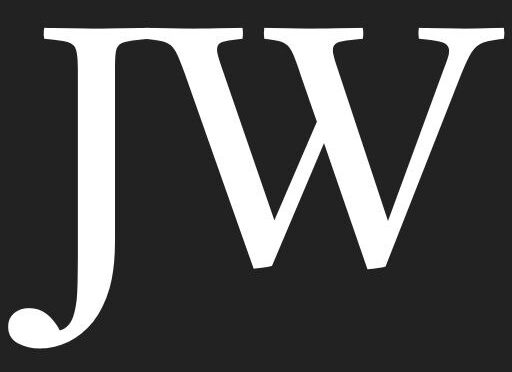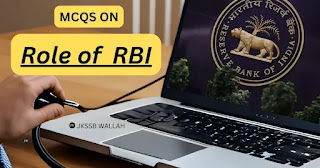RBI is the central banking institution of India, responsible for issuing and managing the country’s currency, regulating the monetary policy, and supervising the banking sector. Here are the 20 Mcqs on Role of RBI which is an important topic in economics for various competative exams conducted by SSC,JKSSB, JKPSC,Banking and other state level exams.
1. When was the Reserve Bank of India established?
a) April 1, 1935
b) July 12, 1982
c) May 26, 2006
d) September 30, 2005
The correct answer is a) April 1, 1935.
2. Since when has India been a member of the International Monetary Fund?
a) 1934
b) 1945
c) 1947
d) 1949
The correct answer is b) 1945.
3. Which commission’s recommendations led to the establishment of the Reserve Bank of India?
a) Chamberlain Commission
b) Hilton Young Commission
c) Keynes Commission
d) None of the above
The correct answer is b) Hilton Young Commission.
4. Who was the first Indian-origin Governor of the Reserve Bank of India?
a) C. D. Deshmukh
b) Osborne Smith
c) C. Rajagopalachari
d) L. K. Jha
The correct answer is a) C. D. Deshmukh.
5. Where is the headquarters of the Reserve Bank of India located?
a) Delhi
b) Kolkata
c) Ahmedabad
d) Mumbai
The correct answer is d) Mumbai.
6. Which institution regulates the money circulation in India?
a) NABARD
b) Commercial Banks
c) State Bank of India
d) Reserve Bank of India
The correct answer is d) Reserve Bank of India.
7. What is the purpose of the CRR (Cash Reserve Ratio)?
a) Controlling inflation
b) Controlling the fiscal deficit
c) Ensuring the solvency of banks
d) Regulating foreign exchange rates
The correct answer is c) Ensuring the solvency of banks.
8. Which monetary policy tool is used by RBI to control the money supply?
a) Fiscal policy
b) Exchange rate policy
c) Repo rate
d) Trade policy
The correct answer is c) Repo rate.
9. What is the purpose of the ‘Prompt Corrective Action’ framework by RBI?
a) Encourage banks to take more risks
b) Penalize banks for high-profit margins
c) Monitor and take corrective measures for weak banks
d) Promote banks’ involvement in social initiatives
The correct answer is c) Monitor and take corrective measures for weak banks.
10. Which entity formulates and implements India’s monetary policy?
a) Ministry of Finance
b) Prime Minister’s Office
c) Reserve Bank of India
d) Ministry of External Affairs
The correct answer is c) Reserve Bank of India.
11. What is the role of RBI in regulating the credit system of the country?
a) Ensuring that banks only lend to government institutions
b) Controlling the amount of money people can withdraw from ATMs
c) Regulating interest rates on loans and deposits
d) Promoting cash transactions over digital payments
The correct answer is c) Regulating interest rates on loans and deposits.
12. How does RBI influence economic growth through open market operations?
a) By directly investing in the stock market
b) By buying and selling government securities
c) By providing grants to businesses
d) By imposing tariffs on imports
The correct answer is b) By buying and selling government securities.
13. Which committee recommended the establishment of the Banking Ombudsman scheme?
a) Narasimham Committee
b) Raghuram Rajan Committee
c) Bimal Jalan Committee
d) Urjit Patel Committee
The correct answer is a) Narasimham Committee.
14. How does RBI control inflation using monetary policy tools?
a) By increasing government spending
b) By decreasing government revenue
c) By increasing interest rates
d) By decreasing unemployment benefits
The correct answer is c) By increasing interest rates.
15. What is the purpose of the SLBC (State Level Bankers’ Committee)?
a) Regulate state-level financial institutions
b) Coordinate activities of banks and other financial institutions to facilitate credit distribution
c) Regulate cooperative banks
d) Determine the exchange rate of the Indian Rupee
The correct answer is b) Coordinate activities of banks and other financial institutions to facilitate credit distribution.
16. What is the primary function of the RBI?
a) Promoting industrial growth
b) Ensuring price stability and control of inflation
c) Regulating foreign exchange rates
d) Managing fiscal policy
The correct answer is b) Ensuring price stability and control of inflation.
17. How does the RBI regulate the money supply through the CRR (Cash Reserve Ratio)?
a) By directly controlling government spending
b) By regulating interest rates on loans
c) By controlling the amount of funds banks need to maintain with the RBI
d) By providing loans to commercial banks
The correct answer is c) By controlling the amount of funds banks need to maintain with the RBI.
18. What is the purpose of the NEFT (National Electronic Funds Transfer) system?
a) Regulate the stock market
b) Facilitate electronic transfer of funds between bank accounts
c) Regulate foreign trade
d) Issue currency notes and coins
The correct answer is b) Facilitate electronic transfer of funds between bank accounts.
19. How does the RBI control the money supply through the SLR (Statutory Liquidity Ratio)?
a) By regulating the foreign exchange rates
b) By directly investing in the stock market
c) By controlling the amount of liquid assets banks need to maintain
d) By providing loans to non-banking financial institutions
The correct answer is c) By controlling the amount of liquid assets banks need to maintain.
20. What is the purpose of the RTGS (Real Time Gross Settlement) system?
a) Regulate the fiscal deficit
b) Facilitate electronic transfer of large sums of money in real-time
c) Regulate the export of goods
d) Issue government bonds
The correct answer is b) Facilitate electronic transfer of large sums of money in real-time.

